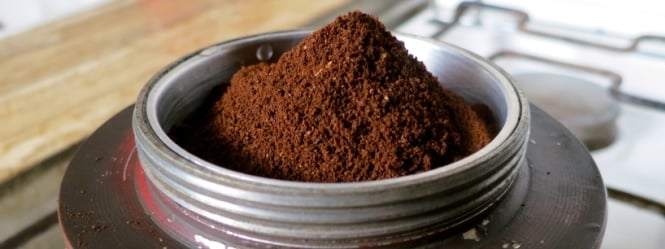Though these two devices have stood the test of time and fairly gained their fame, it is always a nice idea to compare and contrast them, seeing which specific characteristics made them so vastly well-known, so popular with coffee lovers and so timeless.
The moka pot main feature is that it is a stove-top artifact. It works by allowing pressurized steam to filter through the ground coffee beans and placing the final liquid in a main chamber in the top of the pot that can be separated from the rest and used to serve the coffee directly to the mug. It was patented in the ‘30s by an Italian inventor and the Bialetti Company continues to produce their classic moka pot under the name “Moka express”.
The coffee resulting from this process it thicker and more concentrated than many home made beverages and bears a strong resemblance to the -also Italian- Espresso. Also, like its fellow countryman, the coffee brewed using the moka pot has crema.
Though not particularly hard, truth is moka pots need maintenance. The rubber seal and the filters need to be checked and replaced periodically and the oily residues that will eventually build up against the inner walls of the containers need to be carefully watched. These residues are desirable because protect the coffee from acquiring any metallic aftertaste from the metal from which the pot is made, but if left without use for a long time, this coating will go rancid and some thorough cleaning will be required.
The French press, on its own, is a very well-rounded device and its popularity is not in vain. Patented in the ‘20s, the brewing process is manual and coffee is obtained by, after a four minute process, applying pressure to a rod that will activate the mechanism and filter the beans and the liquid. We will obtain a strong beverage with some residue. We have discussed this brewing process in the past, in case you are looking for a more detailed, step-by-step guide.
If we compare the French press to automatic drip based devices or pour over methods, we might find its brewing process to be overly complicated. If, on the other hand, compare it to the moka pot, the obvious simplicity of the cafetière will stand out without any exaggeration. While I do not like to diminish any device, it is a fact that there are a lot of factors that come together when it comes to brew coffee in a moka pot, and for an aficionado these things can build up and we will be left with a low quality beverage… and no one wants that.
With the moka pot, temperature, timing and the general state of the device itself are vital, and there is not much room for experimenting. With the French press, regulations are not so strict and a lighter or stronger cup can be achieved by varying the amount of water or beans that are introduced in the carafe. Because the pot is opaque and over a stove, controlling the temperature can be tricky, and most users are used to their particular artifact and aware of its particular quirks.
Though both products brew amazing coffee on their own, keep in mind that moka pots are harder to master and there are lots of things that can go wrong or will be learnt and mastered over time. If you are patient and open minded, you are welcome to try but, if you prefer good and to the point coffee, maybe the moka pot is just not a good fit and you will be more comfortable and happier with a classic French press.
